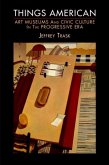In 1921 Sam Rodia, an Italian laborer and tile setter, started work on an elaborate assemblage in the backyard of his home in Watts, California. The result was an iconic structure now known as the Watts Towers. Rodia created a work that was original, even though the resources available to support his project were virtually nonexistent. Each of his limitations-whether of materials, real estate, finances, or his own education-passed through his creative imagination to become a positive element in his work. In The Modern Moves West, accomplished cultural historian Richard Cándida Smith contends that the Watts Towers provided a model to succeeding California artists that was no longer defined through a subordinate relationship to the artistic capitals of New York and Paris. Tracing the development of abstract painting, assemblage art, and efforts to build new arts institutions, Cándida Smith lays bare the tensions between the democratic and professional sides of modern and contemporary art as California developed a distinct regional cultural life. Men and women from groups long alienated-if not forcibly excluded-from the worlds of "high culture" made their way in, staking out their participation with images and objects that responded to particular circumstances as well as dilemmas of contemporary life, in the process changing the public for whom art was made. Beginning with the emergence of modern art in nineteenth-century France and its influence on young Westerners and continuing through to today's burgeoning border art movement along the U.S.-Mexican frontier, The Modern Moves West dramatically illustrates the paths that California artists took toward a more diverse and inclusive culture.
Dieser Download kann aus rechtlichen Gründen nur mit Rechnungsadresse in A, D ausgeliefert werden.









